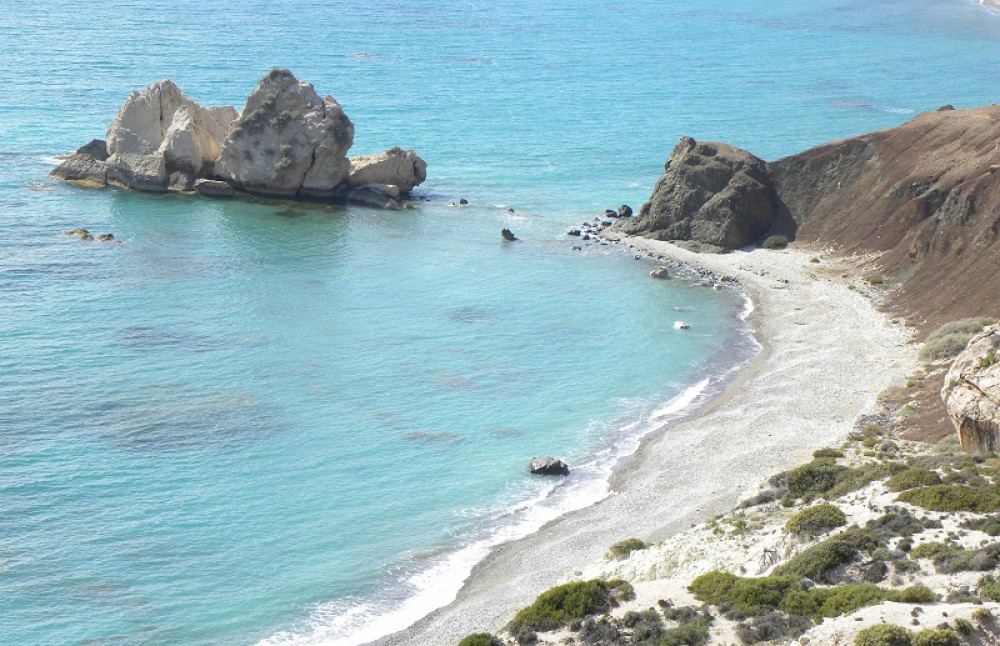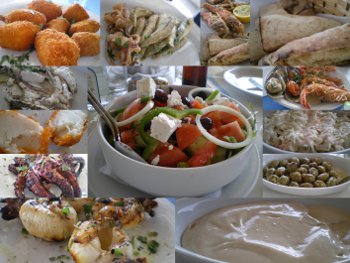
On March 3rd was my mother-in-law’s 40 days “Mnemosyno”. (A mnemosyno is a special service held in the Orthodox Church for the repose of the souls of the dead). “Kollyva”, which are prepared by the closest of kin of the deceased, are given at mnemosyna. Boiled barley wheat berries, usually sweetened, are highly symbolic and represent the soul of the deceased and symbolize everlasting life. Wheat represents the life cycle of death and regeneration. You may read more details about this, in my original post.

View from Nafplio
We left from Athens early on Saturday morning and passed from Nafplion and Assini as we had some things to deal regarding our house and then went to Sparti. Although it was a beautiful, sunny weekend, it was very cold and there was snow everywhere.

Taygettus Mountain (Sparti)
We arrived there, around 2 p.m. and after lunch at 4 p.m. there was a service at the graveside. After a short service by the priest, “kollyva” were offered to those attending. (The picture is of kollyva I made during Psychosavvato, a few weeks before. Unfortunately I do not have a picture of the ones offered at he mnemosyno which were bought from a confectionery shop at Sparta, decorated with silver dragees). The store bought ones do look much prettier but tastewise, the ones I make are by far better, at least that’s what those who have tasted mine, told me.
This time I made them slightly different than the recipe in my cookbook. I boiled the wheat berries with orange peel, a bay leaf and anise seeds. I also added fresh coriander and a mixture of spices and powdered cookies.
Apart from the religious, ritual background behind this food, this is really something which you should try. You can find the recipe in my cookbook Mint, Cinnamon & Blossom Water, Flavours of Cyprus, Kopiaste, page 132, as well as in Volume 2 of the e-cookbook.
It is listed under desserts because it is sweet (but not overly sweet) and very delicious and it is such a pity we only make this during such unpleasant occasions. It is healthy and you can eat it any time of the day as a dessert, for breakfast or as a snack.

As is the custom, there is a gathering either at home but usually at a “kafeneio” (coffee shop) where Greek coffee, brandy and paximadia (sweet rusks) are offered to those attending the service.
On Sunday the memorial service takes place at church, after the divine liturgy, where kollyva are also offered when the service is over and close relatives and friends are invited for lunch.

On Saturday evening, after the visit to the coffee shop, we went back home and for several hours we (my three sister-in-laws and I) had to make the preparation for the food to be served the next day at my brother-in-law’s taverna, for about 60 people. 13 kilos of fresh octopus was washed, cleaned, cut and cooked. 1 kilo of taramas was made into Taramosalata and lots of cabbage was cut into very thin slices to make salads the following day. The only thing which was cooked on Sunday was 12 kilos of spaghetti which was served together with the braised octopus.
My husband was not feeling very well. He went and lied down but the pain increased and after a couple of hours it was intolerable. He had an acute pain in the abdomen which spread towards the chest and his back. My son and I took him to the hospital around 10 p.m.
After lots of blood tests, a cardiograph and X-rays, there was no sign that there was any problem with his heart so a surgeon was called to examine him as well. He was injected with a pain relief and after more tests, it was diagnozed that he gallbladder was irritated and had to stay in hospital for treatment.
My son was traveling Monday morning for England so my husband did not want to stay in Sparta. After signing that he was being released on his own will, we finally went back home at 04:30 a.m.
Unfortunately we missed the church service and mnemosyno. We woke up around 9 o’clock and had to find a drug store to buy pain relief pills which the doctor had prescribed before leaving the hospital.
We went to the taverna as all relatives were concerned, as by then they were informed that we passed the evening in the ER.
Unfortunately I was not in the mood of taking pictures and after lunch we returned to Athens. My son left on Monday and an appointment was fixed with the doctor on Monday afternoon. He wanted him at the hospital first thing on Tuesday morning where he was hospitalized for a week, until Monday morning, where he was treated with antibiotics and other medicine.
He is now on a strict low-fat diet and on the 24th April he has a new appointment for a new assessment and probably he will undergo surgery.

Kopiaste and Kali Orexi,



























 Choco Orange cookies
Choco Orange cookies






